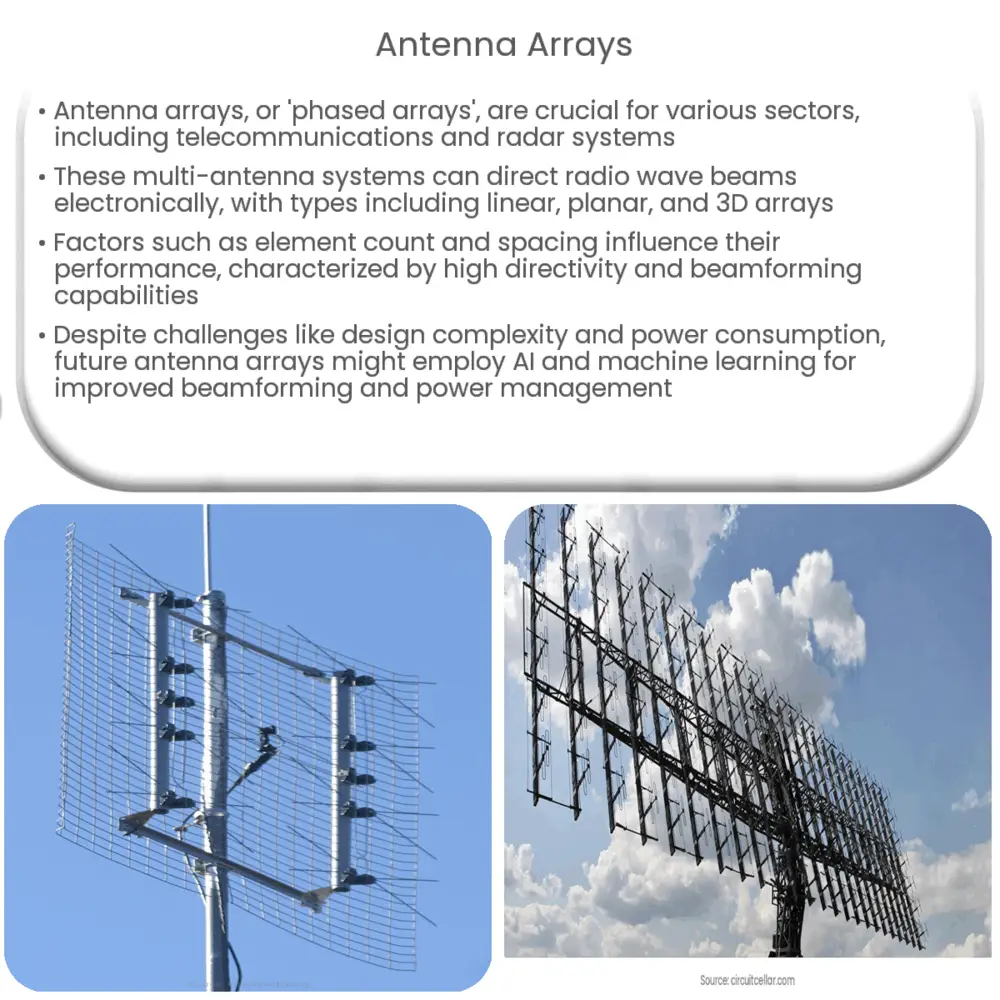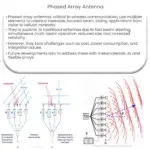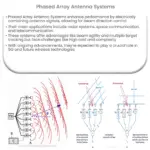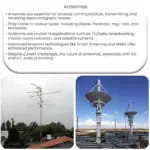Explore the fundamentals of antenna arrays, their types, applications, challenges, and future directions in our comprehensive guide.

Introduction to Antenna Arrays
An antenna array, often referred to as a ‘phased array’, is a set of multiple connected antennas which work together as a single antenna to transmit or receive radio waves. These arrays play a significant role in the field of telecommunications, radar systems, astronomy, and wireless communication technology.
Components and Working Principle
The key components of an antenna array are individual antenna elements. These elements can range from as few as two to several thousand. In a simplistic form, the working principle of an antenna array involves combining the power of these multiple antennas to form a concentrated beam of radio waves. This beam can be steered electronically to point in different directions, without physically moving the antennas.
Types of Antenna Arrays
Characteristics and Performance Factors
The performance and characteristics of an antenna array are largely determined by factors such as the number of elements in the array, spacing between the elements, and the amplitude and phase of the signal at each element. Two key performance factors are:
Applications of Antenna Arrays
Antenna arrays have wide-ranging applications across various fields. Let’s delve into a few:
Challenges and Future Direction
While antenna arrays offer numerous advantages, there are challenges to their widespread adoption. One such challenge is the complexity of design and implementation, especially for large-scale arrays. Moreover, as the number of elements in an array increases, so does the power consumption and the overall cost of the system.
Nonetheless, continuous technological advancements are working towards overcoming these challenges. The future of antenna arrays lies in leveraging AI and machine learning algorithms to optimize beamforming and power management. The growing interest in 6G technology and beyond is expected to further propel the research and development in the field of antenna arrays.
Conclusion
In conclusion, antenna arrays are an integral part of modern wireless communication technology. Their ability to steer radio waves, focus energy in specific directions, and reduce signal interference significantly improve the performance of telecommunication and radar systems. Despite certain challenges, ongoing research and advancements promise an exciting future for this technology. With the advent of AI and machine learning in signal processing, along with the development of new generations of wireless technology, the capabilities and applications of antenna arrays will continue to expand.




